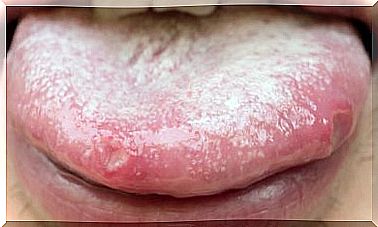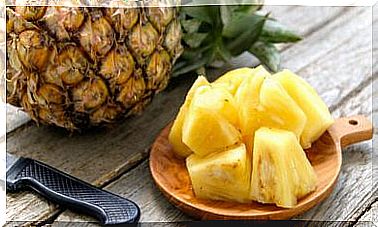Governor: Uses And Precautions
Governor, also known as ‘chaparral’, is a shrub that has been used as a remedy to combat some conditions. We show you its uses, possible benefits and side effects.

The governor is a plant whose presence is abundant in some deserts of the United States and regions of Mexico and Argentina. Although its size is only 3 meters high, it has the ability to decimate the growth of bushes or other shrubs that are around it, in order to obtain more water.
With small bright yellow flowers and green, thick and small leaves, the chaparral herb, another name attributed to it, is known for its characteristic stench and its multiple attributed properties.
Those who have consumed it say that it serves as a treatment for more than 5 dozen diseases, such as the common cold, arthritis and tuberculosis, for example. Can this be true? Let’s see what science says about it and what supports exist for its supposed benefits.
Possible benefits of the governor
Although this plant has been used as a natural medical treatment for centuries, today it is not as popular as other herbs. Thus, it does not have permission to trade in countries such as Canada, because it does not meet some criteria of health policy.
Without detriment to the foregoing, there are other states in which you can buy tinctures, essential oil, tea and various presentations of chaparral without any restriction. Among the most valuable components of this shrub is nordihydroguaiaretic acid (ANDG), an antioxidant compound difficult to find naturally.
1. Its role in oncology
The leaves and stems of the governor shrub are rich in nordihydroguaiaretic acid (ANDG), which has been studied as a palliative adjuvant of certain cancers, as confirmed by research conducted by the Medical Science Monitor and the Journal of Traditional and Complementary Medicine .
An experiment with rodents compared those who received the plant-derived topical to those who did not. The former had a significant decrease in tumor-generating agents than the others did not. However, as a result of liver failure and other problems associated with governor, human studies have not been achieved.
2. A plant with antiviral activity
The governor plant could have the potential to prevent the spread of human papillomavirus (HPV) and herpes simplex virus (HSV). According to studies carried out by the Journal of Traditional and Complementary Medicine and the Journal of Chromatography A , it has plant compounds, called lignans , which inhibit the factor responsible for replicating virotic genes.
On the other hand, research conducted by Drug-Induced Liver Disease suggests that, despite the benefits of chaparral, it could have serious side effects. Diarrhea, fever and liver failure are some of the detailed complications.
It is even believed that the condition is greater if the person has a compromised immune system. Currently there are few studies in humans, so there are no true conclusions on the subject.

3. A natural anti-inflammatory
A review in Oxidative Medicine and Cellular Longevity proposed that chaparral has the potential to combat lipid peroxidation caused by free radicals that attack fats. Consequently, the risk of suffering from chronic and neurodegenerative diseases is reduced.
Likewise, another study found that its anti-inflammatory properties could alleviate conditions such as arthritis and sciatica. An experiment with rodents also linked the governor to improvements in stomach ulcers.
Although chaparral is believed to be a source of anti-inflammatory and antioxidant properties, human studies are still required to prove its potential benefits.
Possible side effects of the governor
Although it has been used as an herbal remedy, the governor can trigger adverse effects that need to be considered. According to the Food and Drug Administration (FDA), it is a poisonous plant that is banned in many countries, but is still available over the counter in certain geographic areas.
The governor is linked to liver toxicity. According to a study published in Frontiers in Physiology , this could be due to nordihydroguaiaretic acid (ANDG), known for its hepatotoxic effects.
However, ANDG stopped being listed as safe in 1968 by the FDA. And in 1992 the possible risks of the governor and their relationship with liver failure were announced. However, there is still a debate about whether or not it is usable in medicine, given the anecdotal evidence.
This herb has been used for years without causing liver failure. There are even studies in which adversity has not occurred, after being ingested in small amounts. For this reason, there are experts who link the increase in liver failure in 1990 with other factors.
Side effects are believed to occur when there is a high concentration of ANDG, as is the case with supplements. On the contrary, the governor tea would not have contraindications, since its volume is smaller. However, it is proven that governor overdoses can occur with trace amounts.
Governor dosage and preparation
Due to little research in humans, experts have not yet established a recommended dosage. According to research by Toxicology and Applied Pharmacology and the Journal of Herbal Pharmacotherapy , some homeopathic supplements and solutions tend to increase the risk of liver damage.
Regarding governor tea, despite having low concentrations of ANDG, special care must be taken with the amount of leaves you use and the time they remain in the water.
Children, pregnant and lactating women should avoid its consumption, since the degree of toxicity is unknown. An animal experiment showed that it induces uterine contractions, which could be inconvenient. If the person uses drugs or suffers from liver or kidney failure, they should avoid ingesting any presentation of the governor.
On the other hand, the preparation that is considered the safest and has been made for centuries is tea. It is made as follows:
- Place a pot with water and wait for it to boil.
- Once the boiling point is reached, add some leaves and boil for 5 seconds.
- Then remove the herb and eat.

What to remember about the governor?
The governor or chaparral is a shrub that, by tradition, has been used as a palliative to combat some conditions. However, at present its possible benefits have been doubted, not only because of the little research in humans, but because it has severe side effects.
Although it has anti-cancer, antiviral and anti-inflammatory properties, the governor could also be toxic. The high concentrations of ANDG present in supplements are believed to cause liver failure.
It is not recommended for pregnant women, because it can cause uterine contractions. Likewise, infants and children should avoid it.









